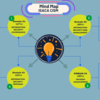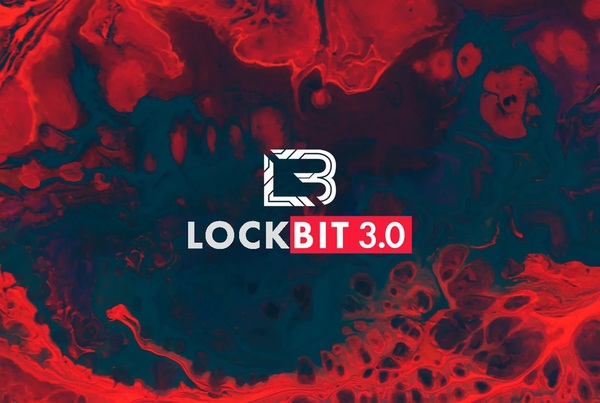As our society becomes increasingly digitized, it becomes more vulnerable to destructive cyberattacks. The only way to prevent these attacks is to be always on guard and to implement a comprehensive security strategy. Today’s ever-changing threat landscape highlights the necessity to examine and investigate the foundations of cybersecurity, its development, and its function in warding off cyberattacks. Thus, what exactly is cybersecurity, and why is it crucial in the modern world? Everything you need to know about cybersecurity is covered in this essay, from the basics to the most promising job paths and beyond.
Cybersecurity Definition and Meaning
Conventional wisdom holds that cybersecurity is “the discipline concerned with the use of techniques, procedures, and technologies to prevent, detect, and respond to intrusions or attacks on an information system.” Security measures are implemented by both individuals and businesses to protect their data and prevent theft, attacks, and other forms of damage. Cybersecurity has developed rapidly since its inception in the 1970s. The goal of cybersecurity today extends beyond the protection of computers to include the safety of their users against online threats. Cybersecurity’s primary goal is to stop sensitive information from falling into the wrong hands, and it also helps ensure a quicker recovery time after breaches.
Different Types of Cybersecurity
Cyberattacks are increasing in extent and complexity, touching on many different fields. There are roughly six distinct categories of cybersecurity that can be defined by the contexts in which they are used:
- Application Security: Integrating apps into corporate models has simplified operations, but it has also opened the door to new security risks. Application security refers to the practice of incorporating security features into web applications and programs to safeguard information from loss, misuse, and tampering.
- Network Security: The term “network security” refers to the practice of protecting an organization’s internal computer networks and network components from cyberattacks through the use of advanced network security solutions such as firewalls, anti-virus and anti-malware software, data loss prevention (DLP) systems, and other multi-layered threat prevention technologies.
- Infrastructure Security: Keeping a company’s most vital systems safe from hackers is known as “cyber defense.” In order to safeguard critical infrastructure from ever-evolving cyberthreats, companies that rely on it must implement best practices and embrace a “zero-trust” security model, rather than relying on the more conventional perimeter-focused security approaches.
- Cloud Security: The term “cloud security” refers to the practice of defending cloud data and cloud computing infrastructure from cybercriminals.
- Mobile Security: This is a precaution taken to prevent hackers from gaining access to private data on portable electronic devices like computers, cellphones, and tablets.
- IoT Security: When implemented, IoT solutions improve productivity and user experience, but they also open the door to potential security flaws. Protecting devices that are connected to the internet requires the use of security measures.
Most Common Types of Cybersecurity Threats
Learn more about the many types of cybersecurity risks and the harm they may cause to organizations and people to get a better grasp on cybersecurity. Although cyberthreats can be motivated by a wide range of factors, financial gain consistently ranks as the most common reason for them. The following are examples of common types of cybersecurity risks in use today:
- Malware: Malicious software, often known as malware, includes programs including viruses, trojans, ransomware, spyware, and others that are installed on a device or network without the owner’s knowledge or consent. Malware can steal information, remove or encrypt files, halt company activities, and even destroy computer systems.
- Password Attack: One of the most typical forms of cyberattack involves the use of a password to gain access to a system, network, or set of files that would otherwise be protected by a user name and password.
- Phishing: The most widespread method of password attack is phishing, which entails sending fake messages by email, SMS, or phone calls purporting to come from trusted sources. User credentials, financial information, and other sensitive information can be stolen in a phishing attack.
- Distributed Denial-Of-Service (DDoS): A distributed denial of service (DDoS) assault is an effort to interrupt or overwhelm a target website by flooding it with phony or artificially created traffic. They are on the rise and increasingly pose a threat to an organization’s finances and reputation.
- Man-In-The-Middle Attack (MITM): A man in the middle attack (MITM) is a sort of eavesdropping cyberattack in which an attacker discreetly enters an ongoing discussion between two legitimate parties with the intention of stealing the victims’ bank passwords and other financial information.
The Importance of Cybersecurity
Cybersecurity is becoming more crucial as sophisticated cybercrimes continue to disrupt businesses and individuals. Protection against a wide range of cyberthreats is impossible without robust cyber security (as discussed above). It’s crucial in mitigating and responding, and it helps bolster a company’s defenses. Cybersecurity has several positive effects, including but not limited to data protection and the use of cyber-resilience strategies to aid in rapid recovery from a cyberattack.
Cyber Safety Tips and Cybersecurity Best Practice
Increased reliance on technology calls for more sophisticated measures to protect against cyberattacks. Although there is no foolproof method, following cybersecurity best practices can reduce the likelihood of devastating cyber attacks. Some suggestions for safe and secure internet use are provided below.
- Avoid clicking unknown and suspicious links or attachments.
- Use strong passwords to secure accounts.
- Verify sources before sharing personal information.
- Update devices, browsers, and apps regularly.
- Make frequent backups of critical files.
- Report suspicious activities.
Top Cybersecurity Challenges Today
Problems with cyber security now almost always involve digitalization. Let’s take a peek at some of the most recent problems plaguing the cybersecurity sector.
- Remote Working Infrastructure: Securing remote and hybrid workplaces is predicted to remain one of the biggest issues in cybersecurity as remote work becomes the norm.
- Ransomware: In the first six months of 2022, there were 236.1 million ransomware assaults registered around the globe (Statista, 2022). To combat the ever-evolving ransomware threat, businesses must establish stringent cybersecurity plans and employ efficient anti-malware solutions.
- Blockchain Evolution: Blockchain technology has many potential advantages, but it also introduces new cybersecurity threats and concerns. In order to combat the worrying uptick in blockchain-based assaults, businesses need to implement cutting-edge cybersecurity strategies.
- IoT Attacks: From an estimated 9.7 billion in 2020, there will be more than 29 billion IoT devices in use by the year 2030. (Statista, 2022). More resources and concentrated efforts, including multi-factor authentication, user verification, etc., are needed to ensure the safety of IoT devices, which are becoming increasingly vulnerable as their use grows.
- Lack of Skilled Personnel: Companies worldwide are worried about a severe lack of qualified cybersecurity personnel. The global demand for trained individuals is likely to increase as the number of data breach incidents increases and the complexity of the threat landscape increases.
Career Opportunities in Cybersecurity
In terms of future job development, the field of cybersecurity is one of the most promising. As the frequency and severity of cyberattacks continues to rise, more and more entry-level, middle-management, and senior leadership positions will become available across a wide range of cybersecurity disciplines. Between 2021-2031, the need for any type of analyst in the field of information security is projected to increase by 35%. (Bureau of Labor Statistics of the United States, 2022). Career options range from “Information Security Specialists,” “Digital Forensic Examiners,” etc., at the beginner level, to “Security Engineer,” “Security Architect,” etc., at the intermediate and advanced levels, depending on one’s skill set and area of interest.
Are Certifications Important for Cybersecurity Professionals?
A bachelor’s degree in computer science is the bare minimum for entry-level cybersecurity positions, but individuals with extra qualifications stand a better chance of excelling in their careers and earning more money. If you’re looking to advance your career in cybersecurity, EC-Council can help you get certified in a wide range of specializations. Applicants use practical experience to learn about all facets of cybersecurity, from ethical hacking to cyber forensics, and advance rapidly in their careers under the direction of industry leaders. Among EC-many Council’s prestigious certifications are:
- C|EH – The Certified Ethical Hacker certification by EC-Council is the world’s number one credential in ethical hacking.
- C|PENT – The Certified Penetration Testing Professional course teaches candidates to master real-world pen testing skills and conduct penetration testing in enterprise networks.
- C|ND – The Certified Network Defender course offers next-gen vendor-neutral network security training through a lab-intensive approach
- E|CIH – EC-Council’s Certified Incident Handler certification makes professionals industry leaders in preparing, handling, and responding to security incidents.
- C|HFI – The Computer Hacking Forensic Investigator program offers lab-based training in conducting digital forensic investigations using the latest technologies.








